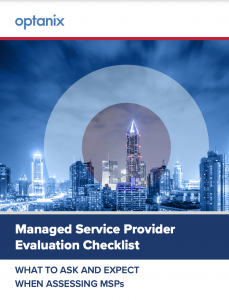
What is Unified Communications as a Service?
To look into Unified Communications as a Service, let’s first define Unified Communications. According to Gartner, Unified Communication platforms — which comprise equipment, software, and services — combine the provision of multiple enterprise communications channels, such as voice, video, personal and team messaging, voicemail, and content sharing.
This can include control, management, and integration of these channels. Cisco Unified Communications (UC) products and services, for example, can also be integrated with networks and systems, IT business applications, and in some cases, consumer applications and devices.
The kinds of services that constitute UC include:
- Voice and telephony, including mobility
- Meeting solutions – audio, video, and web conferencing
- Messaging – email, voicemail, and unified messaging
- Presence and instant messaging
- Clients – desktop clients and thin browser clients
- Communications–enabled applications – workstream collaboration
 Need insight on evaluating a managed service provider for your organization? Download this MSP Evaluation Checklist to ensure you select the best partner.
Need insight on evaluating a managed service provider for your organization? Download this MSP Evaluation Checklist to ensure you select the best partner.
Unified Communications as a Service
Traditionally, UC infrastructure was acquired and maintained on premises by the end customer’s IT team. This meant that IT organizations invested the capital to host and operate the software and associated hardware that made up these systems. Of course, they also had to find a way to ensure the availability of suitably skilled IT staff to operate the infrastructure.
For this reason, as well as the related expense, UC evolved into a service provider model. The service provider hosted the infrastructure for the end customer and provided flexible ways to access it. This removed the massive capital expenses associated with in-house hosting and staffing and made enough economic sense for new UC consumers to switch to a service provider-based consumption model.
With the advent of cloud computing, the shift today is to deliver UC capabilities “as-a-service” with a cloud-based delivery and access model. UC made available from the cloud is what is commonly termed Unified Communications as a Service (UCaaS).
Along with the other trends that are moving technology to the cloud, for many modern organizations, UCaaS is a key part of the digital transformation of their business.
Understanding the Pros of UCaaS
To IT organizations, the most compelling benefit of UCaaS is typically the move away from capital-intensive hosting of in-house infrastructure systems. The subscription model of UCaaS provides the benefits of a predictable operating expense for budgeting and planning purposes.
From a staffing perspective, it moves the onus from in-house IT teams to the service provider in terms of finding the right kinds of skilled personnel to set up, operate, and troubleshoot these systems. This frees up in-house IT teams to focus on the business needs and roadmap of their core business.
Another big benefit is business agility. UCaaS provides the ability to rapidly scale up and down as business needs change. This agility is particularly important as sudden changes in operating climes occur such as the current migration of workers away from the office to home.
Addressing the Cons of UCaaS
On the other hand, once they move to a UCaaS model, the end customer loses a degree of control. Customization shifts into the hands of the service provider.
Based on the deployment model, it may or may not be easy to move beyond the core service model to tailor features to their specific needs. (Note: Single tenant engagement models definitely provide for superior customization than multi-tenant – where many customers might be serviced using the same infrastructure.)
While there are some security concerns since the entire unified communications system infrastructure is remote, these are largely not as threatening. The maturity of cloud computing has resulted in extensive measures being taken to mitigate these kinds of risks. In fact, from a data integrity point of view, since the information is stored in the cloud in a redundant fashion, UCaaS might even provide superior business continuity capabilities.
The adoption model is a huge consideration for UCaaS. For companies that are relatively young without a lot of legacy infrastructure, going with UCaaS is a much easier decision. But for companies with existing legacy UC systems, it is a far bigger consideration when it comes to making the move.
In these cases, there needs to be some careful planning around a coordinated selection of features. The strategy should maximize the interoperability of the in-house systems with the remote UCaaS services to cater to the communication and collaboration needs of the business.